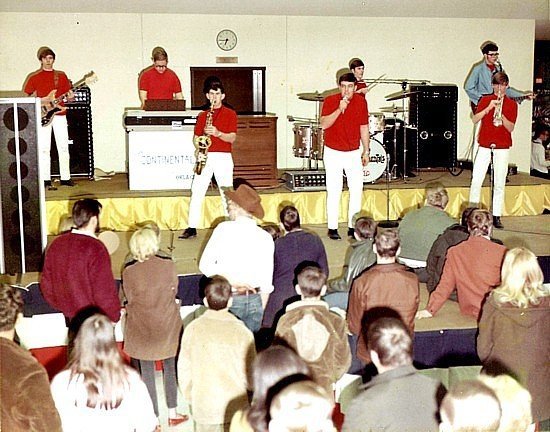
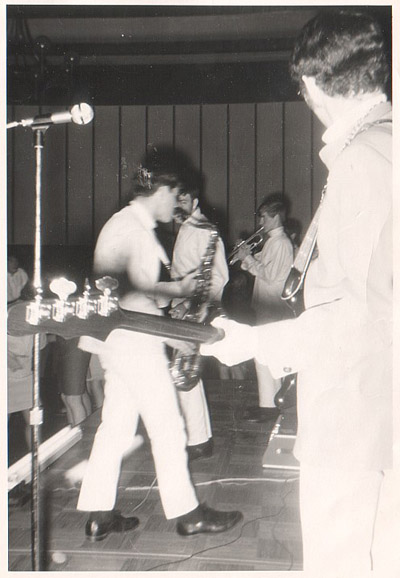
Beginnings:
Randy Stark & Roger Harrison met in grade school playing Little League baseball. They became lifelong friends, attending grade school, high school & college together. After the Beatles appearance on the Ed Sullivan show in 1964 their interest abruptly turned to music.
Roger’s father played guitar, so there was always a guitar lying around the house. Roger decided to take up the instrument. Meanwhile, Randy played in the Southeast High School band. After going to a James Brown concert in the mid-60’s, both teens had seen their immediate future & began making plans for forming a band.
Coming of Age:
Randy & Roger were freshmen in college, making ends meet by working after classes & on weekends at a local supermarket chain. They decided there must be a better way to pay their way through college. The supermarket Randy worked at was managed by a local musician by the name of Jerry Schell. He played in a well known nightclub band named Jerry Fisher & the Nightbeats (Jerry Fisher later replaced David Clayton Thomas as lead vocalist for Blood, Sweat & Tears). Jerry offered the supermarket warehouse as a place Randy & Roger could hold auditions. Recruited were fellow Southeast schoolmates Ron Jones (sax), Allen Correll (trumpet) & Gene Glover (drums). Randy was the front man & lead vocalist. At that time everyone played guitar, hardly anyone played bass. Deciding it was easier to find another guitarist than a bassist, Roger volunteered to learn the bass.
In a subsequent audition, Pat Smiley, who attended Northwest Classen High School, was brought on to play guitar & Lee Gross, organ. The group was christened “The Soul Authority”. Randy & Roger had correctly deduced that an actual horn section was the ticket to success, whereas most groups simulated the horns with a Farfisa Organ.
Phase II, The Continentals:
Gene Glover decided to leave the band to start his own group. At that exact time a very popular OKC band “The Continentals” had just broken up. The drummer, Gary Rowland, had copyrighted the name of the group. He offered to join our bandand also offered us the opportunity to use the name. The well known name & the horn section catapulted us to major status in the OKC market. Also at the time, another high school friend from Southeast High, Larry Rogers, replaced Lee Gross on organ. Larry brought with him a Hammond B-3 Organ (complete with a Leslie speaker enclosure!) which further fine tuned the sound they were seeking. Roger & Randy were then able to gladly bail from the supermarket gig.
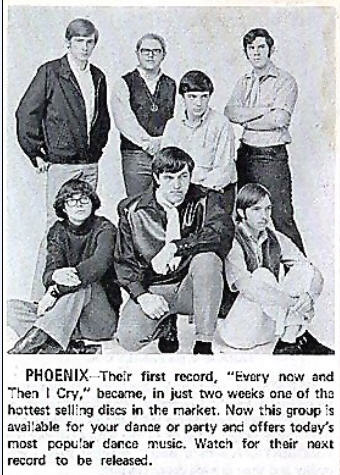
Further Along, the Phoenix:
After about a year as “The Continentals” the band began having differing philosophies. As a result, Gary Rowland left the band, taking the name with him. Pat had a friend & classmate from Northwest Classen named John Proctor who played drums for another local band “Fairweather Forecast, who were slated to open for Janis Joplin at a concert at the University of Oklahoma. John, who at age 14, was already one of the premier drummers in OKC, left Fairweather Forecast & joined the band, now renamed “Phoenix”. This lineup enjoyed even greater popularity. Constant gigs, tv appearances & recording filled the next couple of years.
Band members would change as time elapsed. The following musicians also had stints with Phoenix:
Greg Gelman (trumpet), Larry Shear (trombone), Marvin Ferguson (guitar), Jesse Arviles (guitar), Len Platt (organ), Robert Baxter (drums), Tony Messina (vocals & percussion), Bob Brewer (guitar).
John Proctor rejoined the group after a short leave, much to the group’s satisfaction.
Their 45 on the P.I. label from 1969:
Phoenix – Every Now and Then I Cry
Phoenix – Love Have Mercy
Songs from the “Danny’s Day” show:
Phoenix – Liberation
Phoenix – More and More
Benson Studio tape:
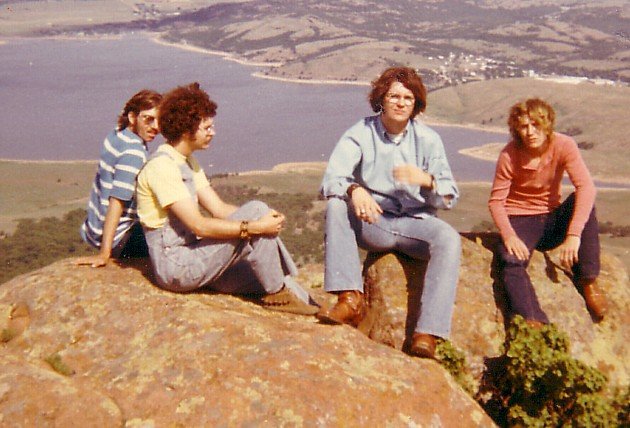
Over a period of time there became musical differences within the band. Phoenix decided to call it a day. Four of the original members: Pat Smiley, Larry Rogers, John Proctor & Roger Harrison decided to form a new band, migrating from the horn sound to the more popular hard rock, at the time. They added vocalist Rick Cobble (who bore a striking resemblance to Robert Plant) & started performing as “Harvest”, formerly Phoenix. That group also attained moderate success.Live at Spav’s in Stillwater, OK, 1971:
Harvest – Almost Cut My Hair
Harvest – Speed King
Through the Years:
Randy, Roger & John played in several bands (separately & together) over the next several years. In 1987, four original members of Phoenix (Randy Stark, John Proctor, Ron Jones & Roger Harrison) performed at their Southeast High School 20 year reunion.
In 1995, shortly after the Murrah Building bombing in Oklahoma City, at the request of longtime disc jockey Ronnie Kaye, the Continentals (5 original members-Ron Jones, Randy Stark, Roger Harrison, Gary Rowland & Allen Correll) played a reunion concert at the State Fairground Arena to 5,000 people. Over $50,000 was raised for the cause. Hermans’ Hermits headlined the show.
Roger formed bands in the 70s that included members who would achieve musical success on an international scale. Steve Crossley was in a group named Oklahoma, who was signed to Capitol Records & produced by Mark Lindsay (Paul Revere & The Raiders), Steve went on to co-write over 90 songs with Glen Campbell. Tom Wasinger, another bandmate, has now won three grammy awards as a producer. Rogers bands were the first bands that both Steve & Tom had ever been involved. Randy formed a band that included Dave Gant, who went on to become the musical director & keyboard-violin player with Garth Brooks.
Modern Times:
Randy, Roger, John & longtime friend, Bobby Smith would play in several more bands together throughout the next 18 years. They still get together, whenever possible, to play & record in Roger’s modest bedroom studio.
Where Are They Now?
John Proctor graduated from the Univ. of Central Oklahoma with a degree in music. He was the #1 drummer for the nationally recognized CSU Jazz Band. He moved to Dallas in 1990, where he works in the Financial Services Industry.
Roger Harrison graduated from Univ. of Central Oklahoma with a degree in Business. Immediately after college, he went to work for a small company in Oklahoma City, where he retired in 2003 as Sec.-Treasurer.
Randy Stark worked for the U.S. Postal Service, attaining full retirement in 2004. Randy spent summer vacations building his dream cabin in Vista Park, Colorado, where he resides during the summer.
Allen Correll graduated from Univ. of Central Oklahoma, with a degree in music. He spent 20 years as a band director in the Moore, Oklahoma School System. He now is a music professor at East Central University in Ada, Oklahoma & still actively plays in a classic rock band “Zoom City”.
Gene Glover graduated with a master’s degree in Music from the highly regarded North Texas State. He earned a grammy as part of the North Texas State Band. He now resides in Dallas, teaching music & playing in Dallas area bands.
Ron Jones graduated from the University of Oklahoma, obtaining dual degrees in accounting & psychology. He has spent the last several years employed by the State Comptrollers office & also the Okla. Dept. of Corrections.
Pat Smiley & Rick Cobble both met untimely deaths at age 50.
Legacy:Roger’s son, Matt has, at age 23, is a well known musician in the OKC area. He has toured all over the United State & Europe, played in major music festivals in Chicago, NYC, Austin & Amsterdam. He was part of a group that signed a recording contract with Touch & Go Records.
Roger Harrison, 2010
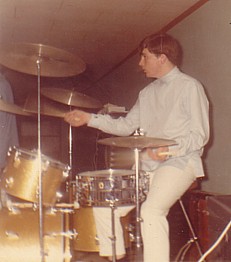
I played in an Oklahoma City based seven-piece horn band called Phoenix, from March 1969 to late 1970. The band that became Phoenix was originally called The Soul Authority. Then they changed drummers about 1968 and became The Continentals. The Continentials then changed drummers again in 1969, (this is where I got into the band at the age of 14) and we became Phoenix.
We played all over Oklahoma and parts of southern Kansas. Some of the OKC bands that were doing that Kansas circuit in those days were sponsored by 1520 KOMA in Oklahoma City. Phoenix, and several other bands however, were sponsored by 930 WKY, also out of Oklahoma City. We probably played every National Guard Armory and VFW Hall in Oklahoma during the two years 1969 – 1970.
In 1969, we released a 45 rpm single in the Oklahoma City market, and it received airplay on WKY 930 AM for several weeks before dropping off the local charts. It was a cover of a Uniques tune called “Every Now and Then I Cry.” The flip side was a cover of a Porter & Hayes tune called “Love Have Mercy.”
For about a two-year period, Phoenix and The Midnight Rebels were the two top dogs in Oklahoma City. They had a great vocalist by the name of Mark Keller, and they had released a cover version of “Smiling Phases” by Blood, Sweat, and Tears some months before we released “Every Now And Then I Cry”, and they were in fact, to some degree, a motivating force to us in getting our own record completed and out there in the record shops.
Sullivan Studios, where we recorded both tunes was in a suburb of OKC called Capital Hill. The studio was owned and operated by Gene Sullivan, who at one time had been part of the duo Wiley & Gene. In 1941, Wiley & Gene recorded the country hit “When My Blue Moon Turns To Gold”. Sullivan’s was a three-track studio. We had the rhythm section on one track, the horns on a second track, and the vocals on the third track. Benson Studios in OKC had an actual four-track studio, but the hourly fee of $20 was prohibitive at the time.
Everything we did was cover material. We did throw in some novelty tunes however such as “A Boy Named Sue” “Long Tall Texan”, and “Folsom Prison Blues” to name three.
The photo of us playing at the ballpark was The Oklahoma City Pop Festival, just two months after Woodstock, and two weeks after the Dallas Pop Festival. We got to play early in the day with the other local bands, and then toward evening, the big name bands took the stage. I remember watching and listening to Grand Funk Railroad, The Grass Roots, Smith, a band called “Texas” who would later be renamed Blood Rock, and others.
In the 70s every city of any size had their local Johnny Carson. In Oklahoma City, it was a local DJ named Danny Williams. They gave him a mid-day talk show called Danny’s Day. He liked our band, and he scheduled us to do three tunes live on his show in July 1970. We chose to do “More and More” by Blood, Sweat, and Tears, “Evil Ways” by Santana, and an instrumental by Chicago called “Liberation”. This was a live performance on the air, and our singer had what was called a “dead microphone” meaning that the people tuned in on TV could hear him, but we could not! The guy in the booth that made us the sound recording of the performance accidentally cut off the beginning of “Liberation”.
“I’ll Be Back” was to be our second 45 single. We recorded this one at Benson Studios in OKC, but we never had it pressed into a 45 because the WKY DJs didn’t like it. This is a cover of The Beatles “I’ll Be Back”, rearranged for horns. The analog tape that this was taken from was so old that the sound goes in and out a little bit.
I went on to College at CSU in Edmond, OK and learned how to play jazz, and big band. In 1976, I was the #1 drummer with the #1 CSU Jazz Ensemble. I joined the Music Union in Oklahoma City, and did a lot of what I call “Vegas On The Road” gigs. These Vegas acts would come in to OKC for two weeks, and many times they would not bring their own musicians with them, choosing to rely on local union players instead. Those gigs were lots of fun.
John Proctor
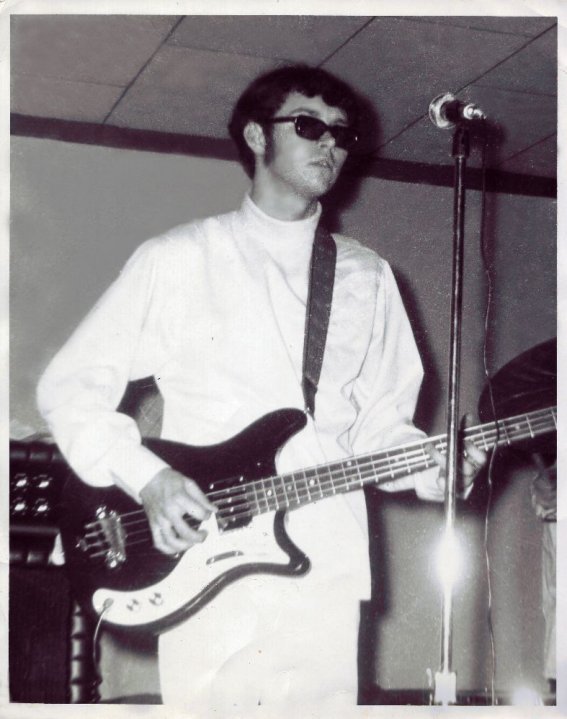
Phoenix was originally formed by Randy Stark & Roger Harrison in early 1968, while attending Central State University in Edmond, Oklahoma. The band was originally named the “Soul Authority”. We were quite enamored by James Brown and the various Motown acts at the time. Randy and I had gone through grade school, high school and college together. We attended Southeast High School.
In 1968 we recruited three additional muscians from Southeast: drummer Gene Glover, saxophonist Ron Jones & trumpeter Allan Correll. Later we recruited another Southeast alumni, Larry Rogers, to play the Hammond B-3 organ.
What set us apart from most of the other local bands was the horn section – other bands would emulate the horns with the Farfisa organ. The move paid off, separating us from the pack.
A short time later we hired drummer Gary Rowland who had been playing in a very popular band The Continentals. That band has disbanded, but Rowland kept the name. Since they already were well established, we adopted the name. After a year, we decided to replace Rowland with John Proctor for musical and philosophical reasons. That is when the band became Phoenix.
With Phoenix we enjoyed even greater success and played almost non-stop while attending school. Then came recording and local television appearances. We appeared on local disc jockey Ronnie Kaye’s television show “The Scene”. For some reason we were sent to a recording studio to record the songs and then lip synch them for the TV show. Another popular show we appeared on was a show called “Danny’s Day”. The co-host of the program was non other than Mary Hart! By that time our music had matured a great deal.
Another humorous thing that comes to mind is the way we traveled. Since there were 7 (sometimes 8 in the band) we usually took one car & a van. I usually rode in the van. With all our equipment there was room for only three people. Two people rode in the front. I had a huge black pleated Kustom Bass Cab with three 15″ speakers. I would place the Cab face down, bring a pillow & blanket and sleep on it all the way back from our sometimes long travels. All in all, some of the best memories of my life.
Roger Harrison
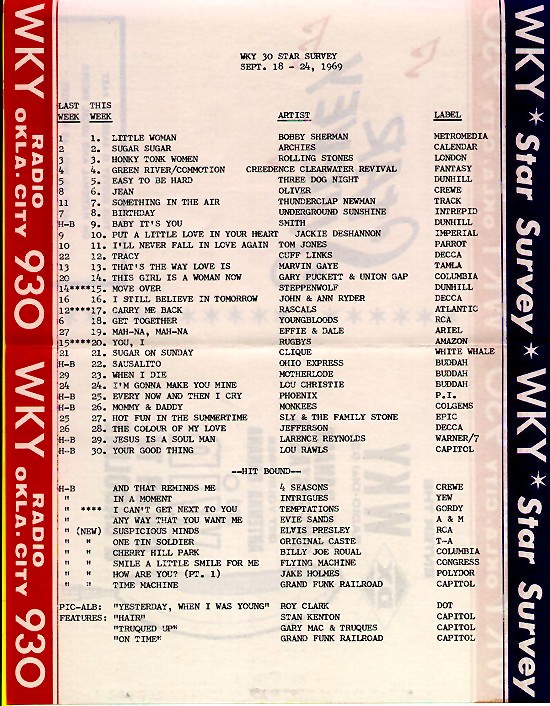
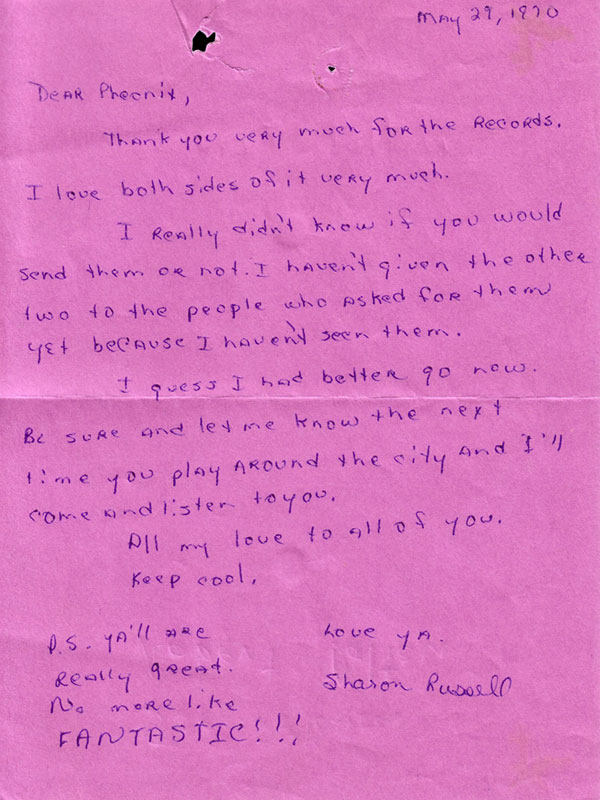

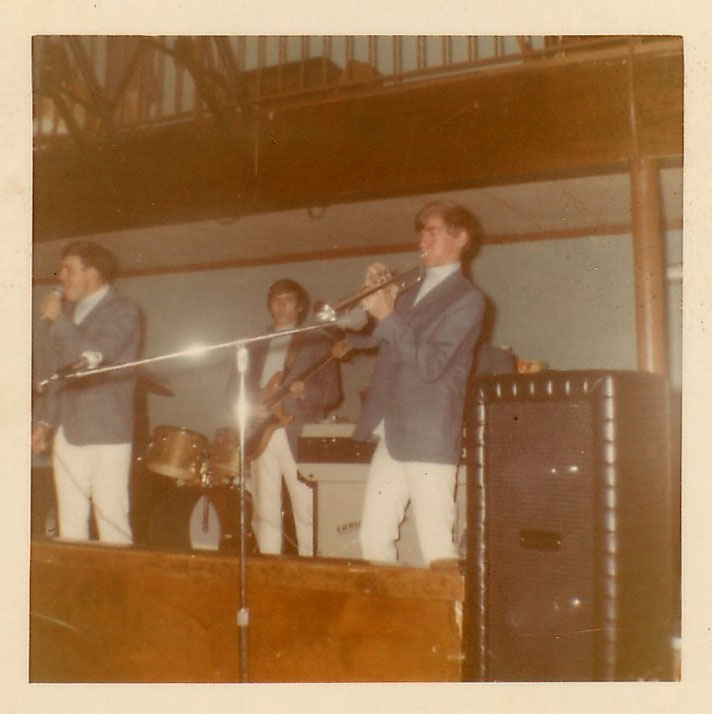
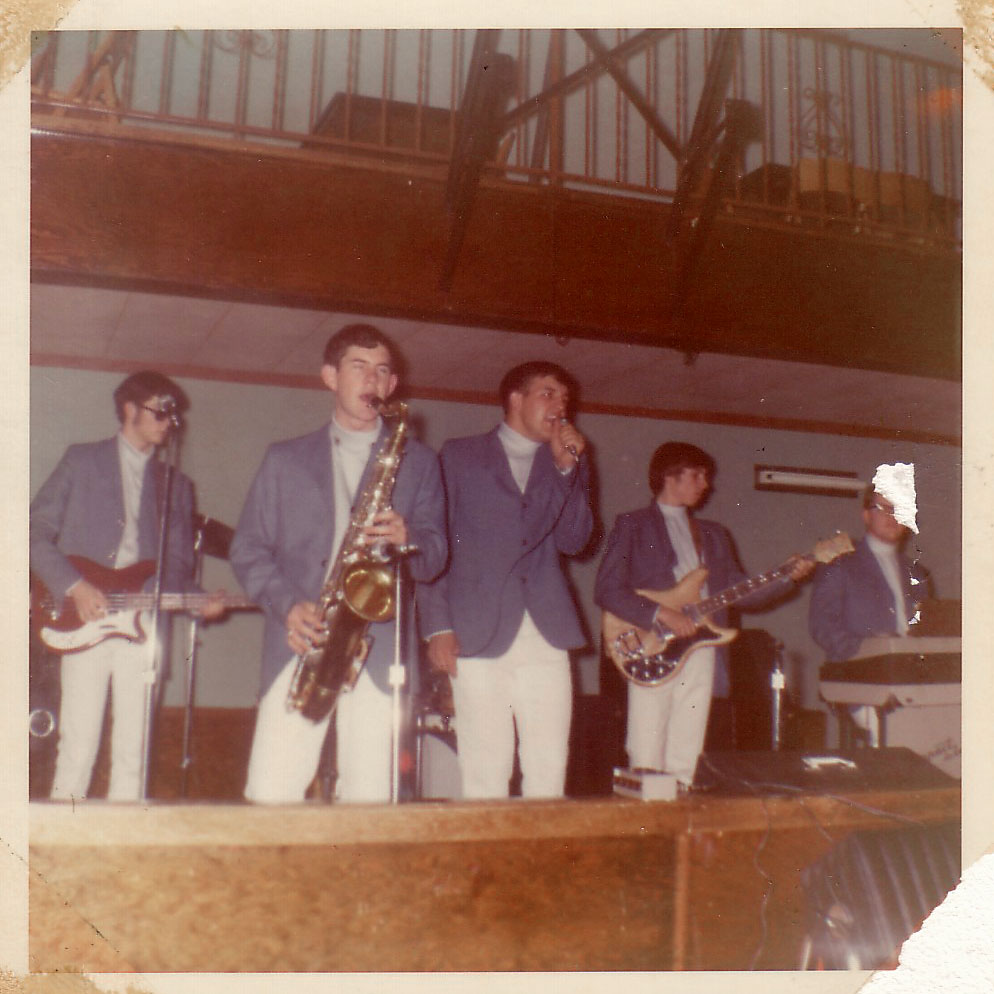
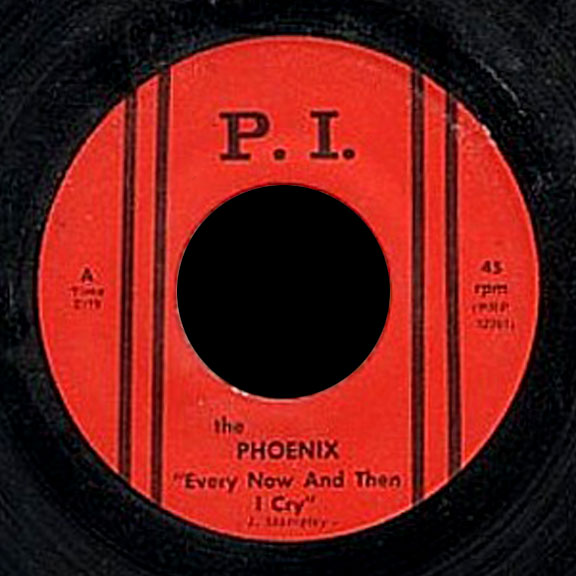
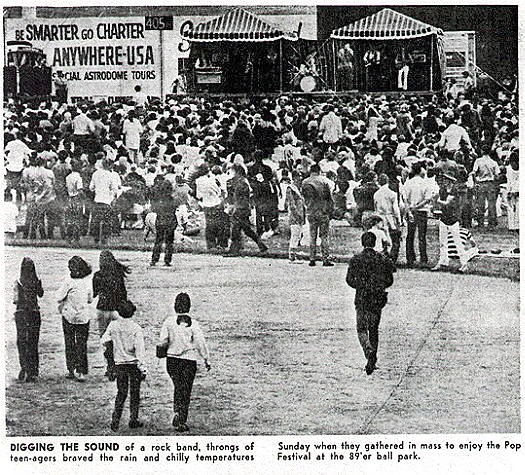
I’M TRYING TO FIND JOHN BOSTIC GRAHAM THE 3RD WHO PLAYED DRUMS WITH THE MIDNIGHT REBELS IN OKC AND WESTERN OKLAHOMA BACK IN 1973. AND ANYONE HELP ME?
Quick question. Some of us remember a schoolmate named Bruce Threlkeld who was a member of one of these bands. Does that name ring a bell?